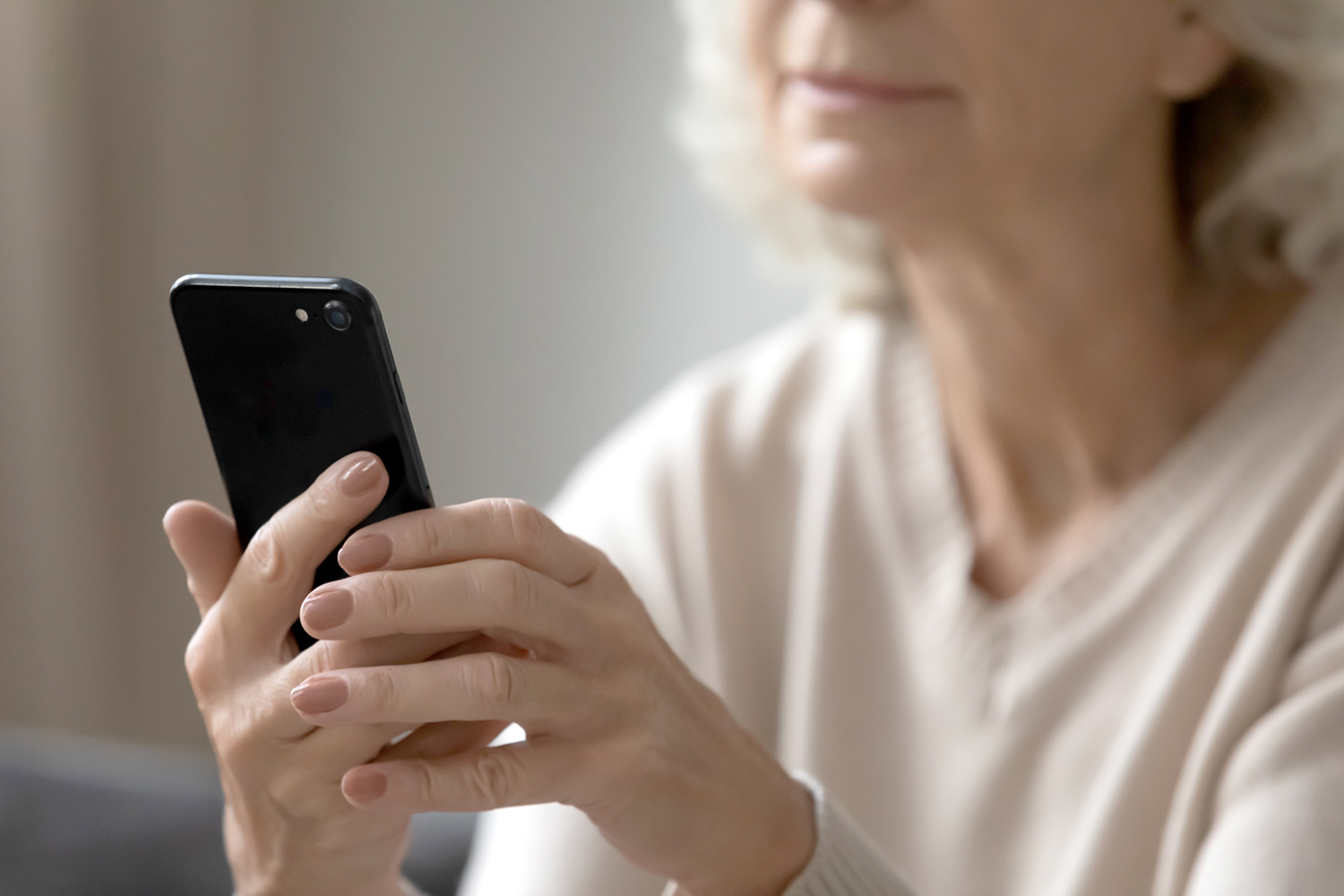PATIENT-REPORTED OUTCOMES, or PROs, is a term that refers broadly to data reported by patients. Trials have found that, across cancer types, when people with advanced disease reported symptoms through a PRO-based system that alerted doctors to changes, they had better symptom management, fewer emergency room and hospital visits, longer survival and better quality of life than those who received usual care.
For example, the PRO-B trial, presented at the San Antonio Breast Cancer Symposium in December 2024, found that breast cancer patients who reported how they were feeling using an electronic PRO-based system had lower fatigue scores throughout one year of study than patients who received usual care. People in the PRO group also had better scores in physical functioning and quality of life.
Participants assigned to the PRO group reported symptoms through a weekly smartphone-based questionnaire. The questionnaire included items about physical function, quality of life, fatigue and pain. Patient responses to the questions translated to a numerical score for each area. Care teams received alerts when patients’ scores for any area worsened so they could respond and potentially intervene.
“We see that alerts to providers are followed by a lot of therapy changes [to supportive care],” Maria Margarete Karsten, a breast surgeon at Charité University Hospital in Berlin and PRO-B’s lead investigator, says.
The usual care group completed the same questionnaire every three months for the study comparison, but their doctors did not see or use these responses for providing care.
Despite demonstrating promising results in trials, electronic PROs have not been uniformly taken up in clinical cancer care. Cancer Today spoke with Karsten about PROs, the benefits they can bring to patients, and the barriers to their widespread clinical use.
CT: What are patient-reported outcomes?
KARSTEN: The FDA [Food and Drug Administration] has defined PROs as any patient report about their health status that is used without interpretation by a third party. Basically, a patient says something, and this is taken at face value. I always try to explain it like a lab value. If we measure hemoglobin, the hemoglobin expresses something about how many red blood cells you have. I use PROs like a hemoglobin level so that I can look at the score, for example, and understand how that patient is doing. A PRO becomes a little bit more of a technical term that is not up to me as a physician to interpret. Whereas if somebody is saying, “I’m feeling OK,” what does this mean? It means different things for different people.
CT: How are PROs important for monitoring cancer symptoms and side effects?
KARSTEN: I personally think that it is very important because it is able to detect symptoms that we might not notice otherwise because of lack of time or because of the subtleness of the symptoms. We can use them to detect those symptoms earlier. Subtle symptoms can be a sign that either you’re getting more side effects from a therapy or that something is going on with the tumor.
CT: The PRO-B trial focused on metastatic breast cancer. Are PROs also beneficial for early-stage cancers?
KARSTEN: PROs are also important in an adjuvant or curative setting to initiate talks about things that patients otherwise might not bring up, such as sexuality. PROs allow me to initiate a conversation and say to you, “Is this something you want to talk about? I see that your scores are not as good as they should be.”
When you’re a new cancer patient and start treatment, you don’t know, “Is this a normal symptom? Do I need to worry about this?” If you use PROs to type in how you’re feeling, it gives you the ability to get feedback: “This is normal,” or “You can do this or that,” or “You need to call your provider.” Of course, in an ideal world, it will be connected to an alert system.
CT: What are the barriers preventing the widespread use of PROs?
KARSTEN: One of them, of course, is that, at least in Germany, there is no insurance reimbursement for PROs. There is a little bit of reimbursement in the U.S. through Medicare. But then there are also technical limitations, like the question of what system to use. And the third one, I think, is that it’s hard. Doctors need something or somebody to interpret these results for them. If you just have scores and you don’t know how to read them, then they are not helpful. So you really need technical systems that basically extract all that information, make a score for you, and say, “OK, alert or no alert,” like a traffic light.
We have heard from quite a few clinicians who were involved in the PRO-B trial who said, “I do talk to my patients; I know how they are doing. I don’t need that.” They feel personally offended [by PRO systems]. I think it has something to do with accepting that technology can help us in our clinical work and not being afraid of it. Of course, in the beginning, it’s kind of difficult, or things often don’t run as smoothly as we would want, but in the long run, it will become beneficial.
This interview has been edited and condensed for clarity.
Cancer Today magazine is free to cancer patients, survivors and caregivers who live in the U.S. Subscribe here to receive four issues per year.





